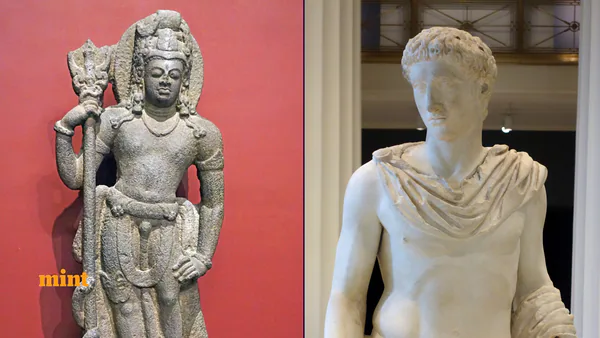
Why Do Gods In Hindu Religion Have Plump Bodies, Unlike Greek Sculptures? Reddit Post Starts Discussion
Compared to Greek or Roman statues, Indian temple sculptures and carvings typically lacked visible muscular details. A Reddit user wondered why. And, that started a prolonged discussion.
“Our ideal body shape was plump, maybe a potbelly individual, etc. In Bengal, Shiva, is considered a son-in-law as Durga Ma is our daughter. Hence, poems by non-Brahmins, not allowed to read Sanskrit, describe him as having a pot belly,” commented one user.
Also Read | Father earns ₹1 crore; no one in family is happy: Reddit user shares post“Even Harappan statues, while very few in number, being discovered so far, show a pot belly,” replied another.
“Most Chinese classical illustrations depict people with pot bellies, too. It's a symbol of abundance. This interpretation is very explicit in the case of Vināyaka and Budai,” came from another.
Another user pointed out,“In the Mahabharata, Bhim is described as Vrikodara, meaning having a flat stomach like a Wolf.”
Other users countered the logic:“It doesn't mean FLAT stomach like a wolf, it means his hunger was like that of a wolf.”
Going back to the non-muscular depiction, one user wrote,“In Indian spirituality, such as in the Hindu culture, the physical material body is more of a vessel the soul should escape from by achieving spiritual enlightenment, and thus how the body looks is irrelevant from that point of view.”
Also Read | Reddit user confused about taking new job with ₹7 LPA salary hike; here's whyAnother user thought it could be“different aesthetics” by Indians.
The Greeks and Romans focused more on muscular physique and flowing robes. Indian sculptures, on the other hand, have elaborate carvings in case of ornaments,” the user wrote.
Modern notions of male beautyRenowned mythologist Devdutt Pattanaik explains in one of his columns how ideas of body size and beauty have changed in India over time. In earlier centuries, fatness signified wealth because only the rich had enough food. Muscular bodies were linked to labour and thin bodies to poverty.
Greek art later shaped modern ideas of male beauty, so today heroes are shown with defined muscles, even in posters of Hindu gods, according to Pattanaik. Traditional Hindu texts describe goddesses with soft rounded bodies while Western influence has pushed women toward firmer shapes.
Also Read | Reddit user gives ₹1,000 tip on Diwali; what happens next melts his heartIn his article, The Yaksha's potbelly, Pattanaik gives examples of Kubera and Ganesha. Both have a large belly that symbolises wealth and abundance.
“The modern notions of male beauty have its roots in Greek sculpture where heroes were shown with well-toned bodies, each muscle depicting artistic precision. These have spread via media to our homes. Bollywood heroes today therefore emulate Greek gods,” Pattanaik writes.
“Even modern poster paintings of Hanuman and Ram and Shiva show them with musculature befitting a body builder, very different from the soft delicate features that Raja Ravi Verma painted,” adds the mythologist.
Legal Disclaimer:
MENAFN provides the
information “as is” without warranty of any kind. We do not accept
any responsibility or liability for the accuracy, content, images,
videos, licenses, completeness, legality, or reliability of the information
contained in this article. If you have any complaints or copyright
issues related to this article, kindly contact the provider above.


















Comments
No comment